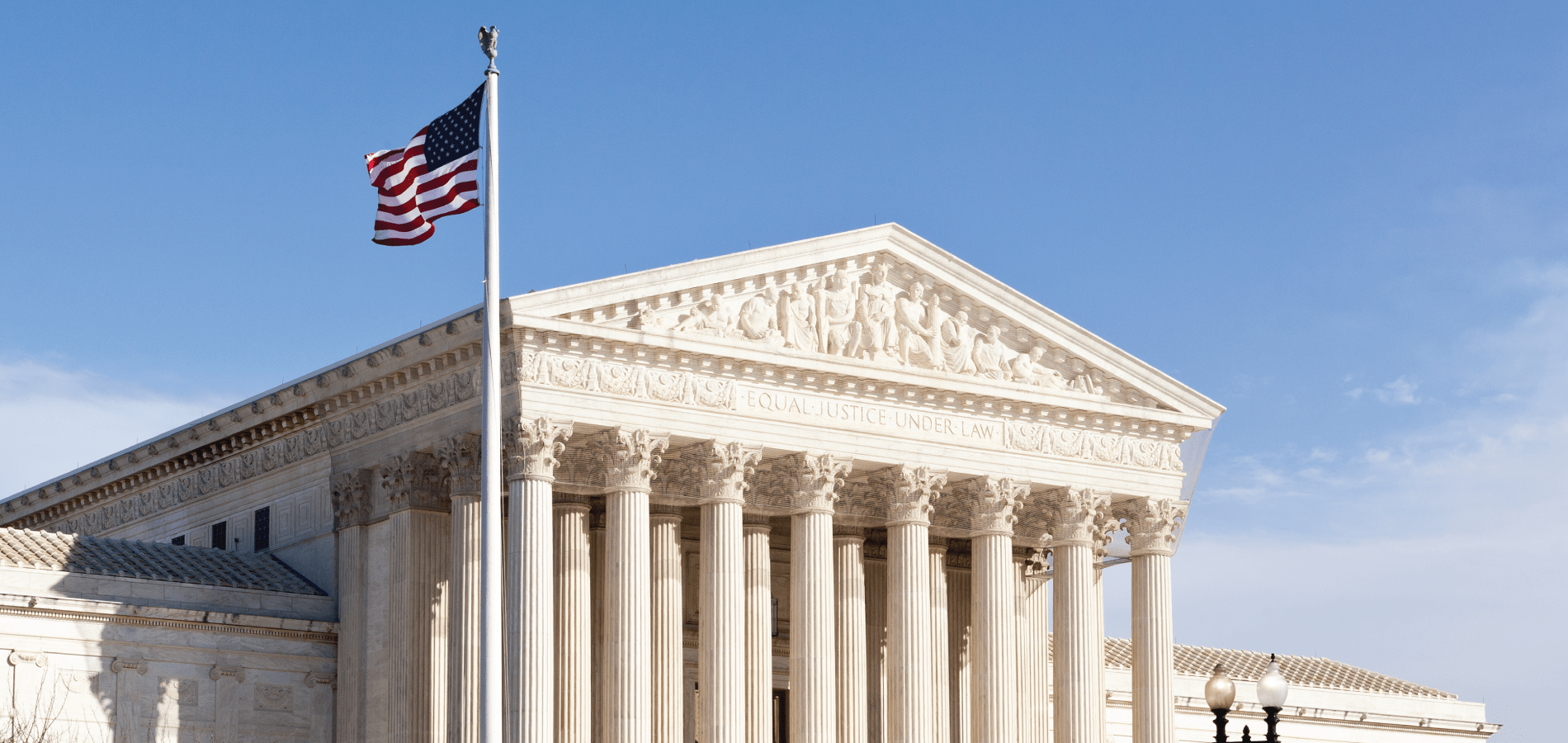The month of March marks the birthdays of former Chief Justice Earl Warren and retired Associate Justice Sandra Day O’Connor of the Supreme Court of the United States, both of whom substantially impacted the United States Supreme Court and the American legal system.
Retired Associate Justice Sandra Day O’Connor
Born on March 26, 1930 in El Paso, Texas, Sandra Day O’Connor spent much of her childhood on her family’s ranch in Arizona. She would grow up to be a pioneer for women, eventually serving as the first female Justice on the United States Supreme Court, for which she was unanimously approved by the Senate. While she is best known for this historical role, this was not the first time she cracked the glass ceiling. In 1972 she served as the Republican majority leader of the Arizona State Senate, the first female to do so in any state. She was originally appointed to a vacant Senate seat in 1967 and later elected for a full term, to which she was reelected twice.
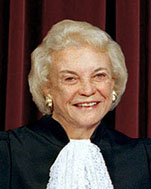
In 1975 O’Connor entered the judicial arena as a judge of the Superior Court of Maricopa County, where she developed a solid reputation. She was then appointed to the Arizona Court of Appeals in 1979. Only two short years later, she was nominated by President Ronald Reagan to the U.S. Supreme Court.
While considered a moderate conservative she was also known for being the influential swing vote reaffirming the Roe v. Wade decision in the controversial case of Planned Parenthood v. Casey (505 U.S. 833) in 1992.
Former Chief Justice Earl Warren
Chief Justice Earl Warren served the bench from 1953 to 1969 during pivotal periods in American history, with social and political consequences affecting generations.
Earl Warren was born in Los Angeles, California on March 19, 1891 and became interested in law at a young age, even riding his bicycle to the courthouse to watch trials. He later attended the University of California – Berkeley Law School and eventually joined a law firm. His law career was interrupted when he chose to serve in the military during World War I. Afterwards he went on to serve as a District Attorney and the Attorney General of California before being elected as Governor in 1942. Warren was the only person elected governor of California for three successive terms.
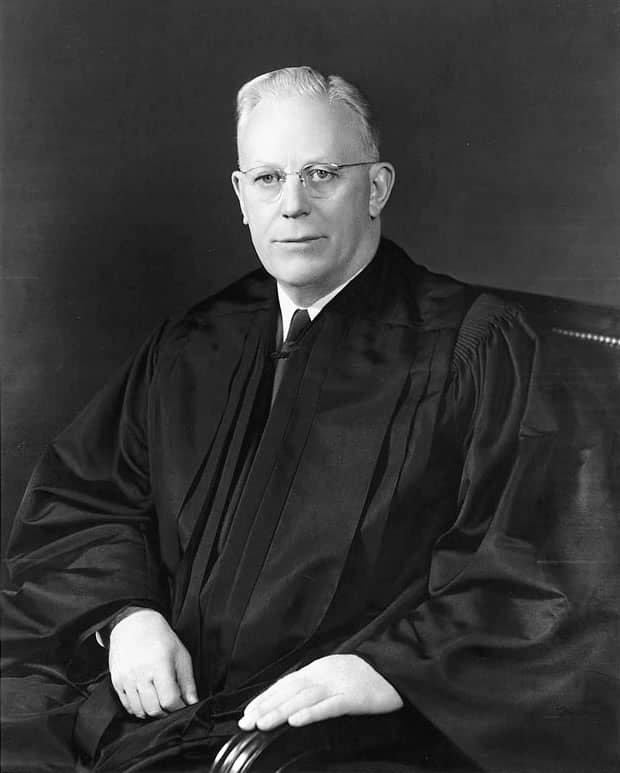
In 1953 President Dwight D. Eisenhower, a moderate conservative, nominated Warren to Chief Justice of the Supreme Court. Chief Justice Warren went on to lead the Court with transformative and surprisingly liberal rulings regarding civil liberties, criminal procedure, and marriage equality.
During his tenure from 1953 to 1969, the “Warren Court” issued many landmark decisions with Chief Justice Warren writing the majority opinion in famous cases such as Brown v. Board of Education (347 U.S. 483), Miranda v. Arizona (384 U.S. 436), Loving v. Virginia (388 U.S. 1), and Gideon v. Wainwright (372 U.S. 335), among others.
Find More in HeinOnline
Search across the full text of all subscribed HeinOnline libraries by entering “Sandra Day O’Connor” OR “Justice O’Connor” in the main search bar under the Full Text tab:

Note the phrases Sandra Day O’Connor and Justice O’Connor are in quotation marks and connected by the Boolean operator in all capital letters in order to search for different versions.
The search produces more than 39,000 results from the Law Journal Library. Using the facets on the left side of the page, narrow your search results by collection/library, section and date.
Articles by Earl Warren and Sandra Day O’Connor
To locate content in the Law Journal Library authored by Earl Warren or Sandra Day O’Connor, click the Advanced Search tool located under the Full Text search bar. Select two Author/Creator search options using the drop-down menu and enter Earl Warren and Sandra Day O’Connor. Select the Boolean operator OR in the drop-down menu located to the right:

Search results include 175 articles authored by the Justices. So, who was the more influential Justice? Author profiles can help us determine whose articles are cited and accessed more in HeinOnline.
To view author profiles for these Justices, click either name from within any search result. Earl Warren’s author profile indicates that he’s been cited by 80 cases, 675 articles, and accessed 247 times by HeinOnline users within the past 12 months. His overall ScholarCheck Rank is 1362:

Sandra Day O’Connor’s author profile shows that she’s been cited by 22 cases, 718 articles, and accessed 639 times by HeinOnline users within the past 12 months. Her overall ScholarCheck Rank is 550:
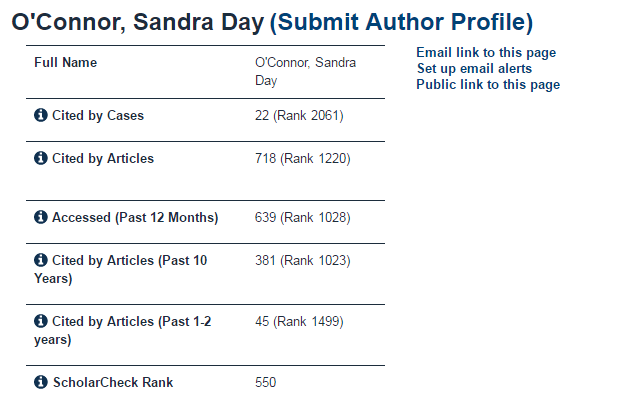
Supreme Court-related databases in HeinOnline
The History of Supreme Court Nominations database contains volumes on both Associate Justice Sandra Day O’Connor and Chief Justice Earl Warren:
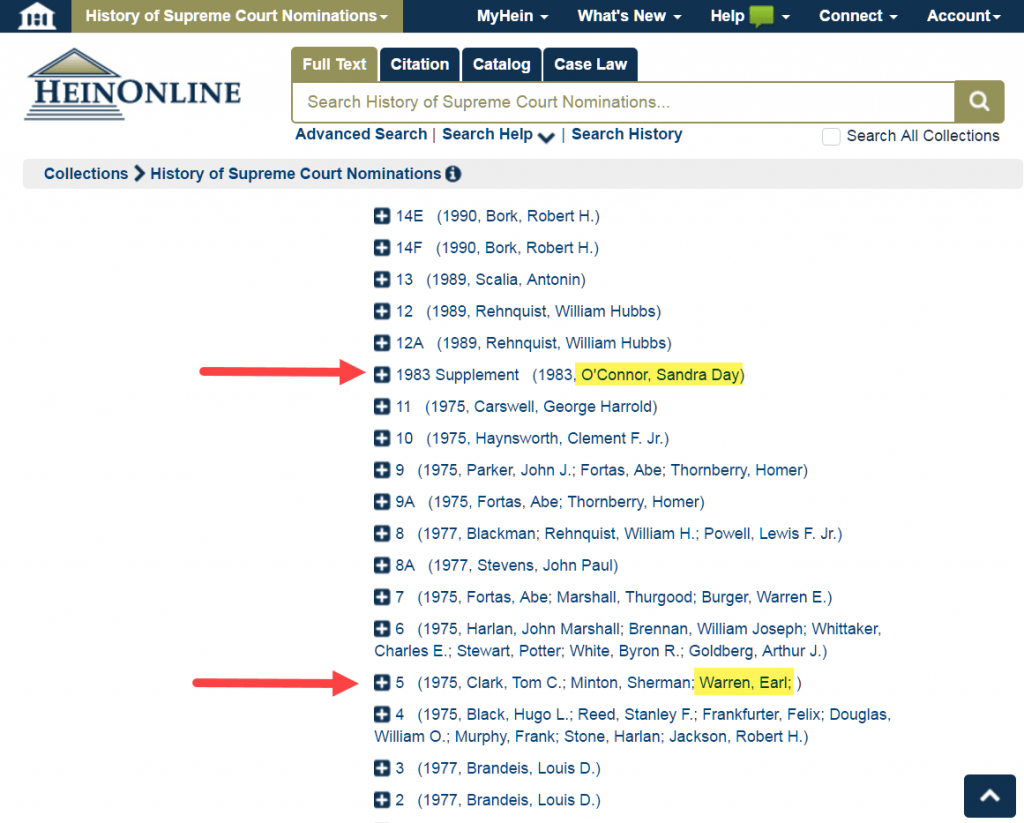
In the U.S. Supreme Court Library, find comprehensive coverage of the U.S. Reports, which are an indexed compilation of the official full text of all decisions of the Supreme Court of the United States and the official record of its rulings, orders, case tables, and other proceedings. Search within the U.S. Reports for “Earl Warren” to view all cases heard by the Warren Court:
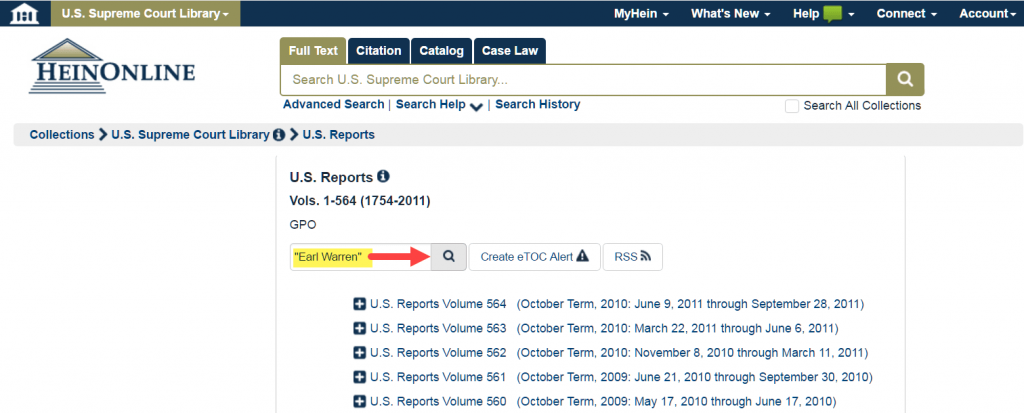
To locate a specific case in the U.S. Supreme Court Library, select the Advanced Search tool located under the Full Text tab in the main search bar. For example, enter Gideon v. Wainwright in the Case Title search option and select Official Reports under the document type:

Quickly access the PDF image of the official case by selecting the case title, Gideon v. Wainwright, Corrections Director. Click the Oyez icon to access a free law project at Chicago-Kent providing a complete and authoritative source for all of the Supreme Court’s audio since the installation of a recording system in October 1955. This site exclusively offers transcript-synchronized and searchable audio, plain-English case summaries, illustrated decision information, and opinions.

After serving 24 years during which she survived breast cancer with a double mastectomy, Justice O’Connor retired in 2006 to care for her husband who had been diagnosed with Alzheimer’s disease. In her retirement, she continues to advocate on educating youth on government with the development of iCivics and video games as well as authoring a book among other endeavors. Her career in the legal field impacted women’s history. Check out her featured articles in the Women & the Law database during Women’s History Month!
Chief Justice Warren retired in 1969 and passed away in 1974. His contributions to racial equality and civil liberties through the Court continue to impact American society today. Under his leadership, the Supreme Court was able to rule unanimously on some the most controversial cases including Brown v. Board of Education (347 U.S. 483), Gideon v. Wainwright (372 U.S. 335), and Cooper v. Aaron (358 U.S. 1), which brought about great social change in America.
Please contact our support team at (800) 277-6995, email us, or chat with us with us for additional assistance searching and navigating in HeinOnline.
For more information on History of Supreme Court Nominations, U.S. Supreme Court Library, Women & the Law or any other database in HeinOnline, please contact our marketing team at marketing@wshein.com.


